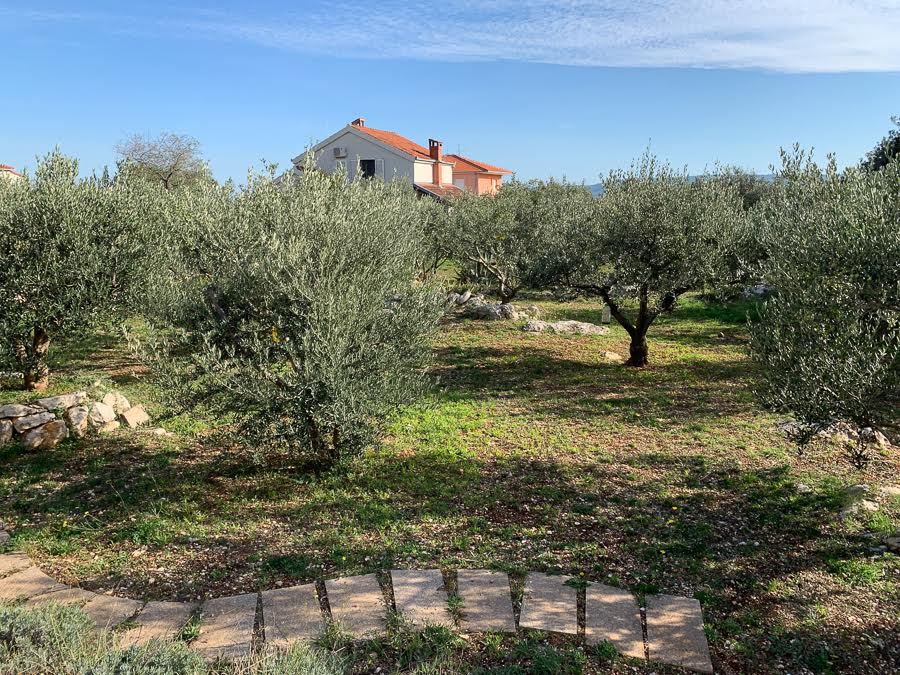November 12, 2020 – Continuing our look at the digital nomad lifestyle in Croatia, the month of November means only one thing – to the fields for olive picking.
In the spirit of age-old Dalmatian tradition, many families offer a home-cooked meal (probably Peka) and plenty of vino in exchange for some manual labor in their olive grove.
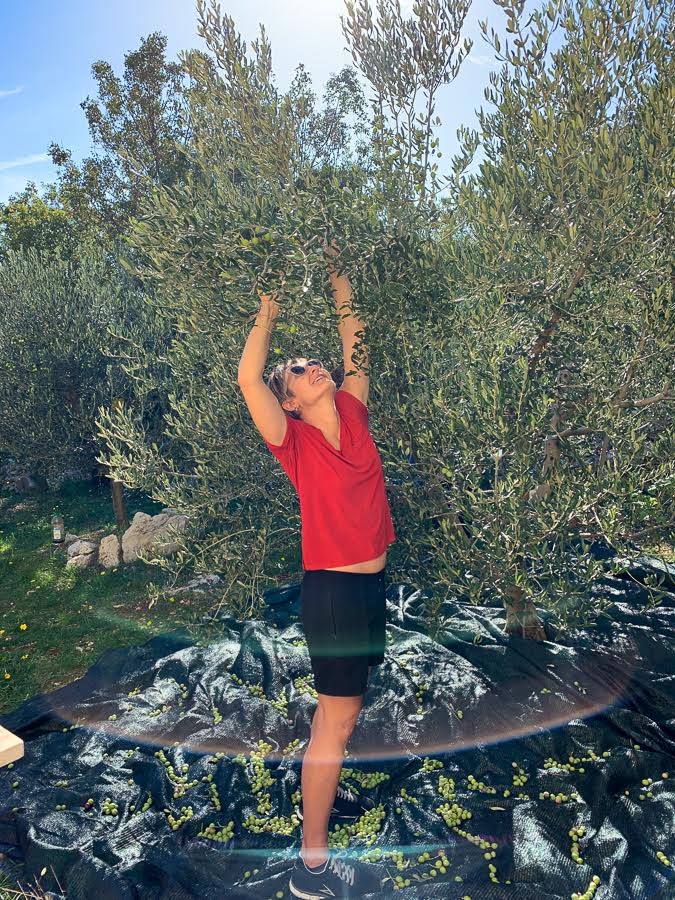
(Working beneath the tree, you have to be careful not to crush the fresh-picked olives on the ground near your feet.)
It’s pickin’ time! Growing up in New Jersey, I know a thing or two about harvesting, mostly the anticipation of delicious, fresh food right off the vine. The state’s motto, after all, is “The Garden State” and it harvests over 100 different types of fruits and vegetables. The official state food is the Jersey tomato. I don’t really like tomatoes but man, ours are super fresh, tender, and seriously good! And the little cherry tomatoes are downright addictive.
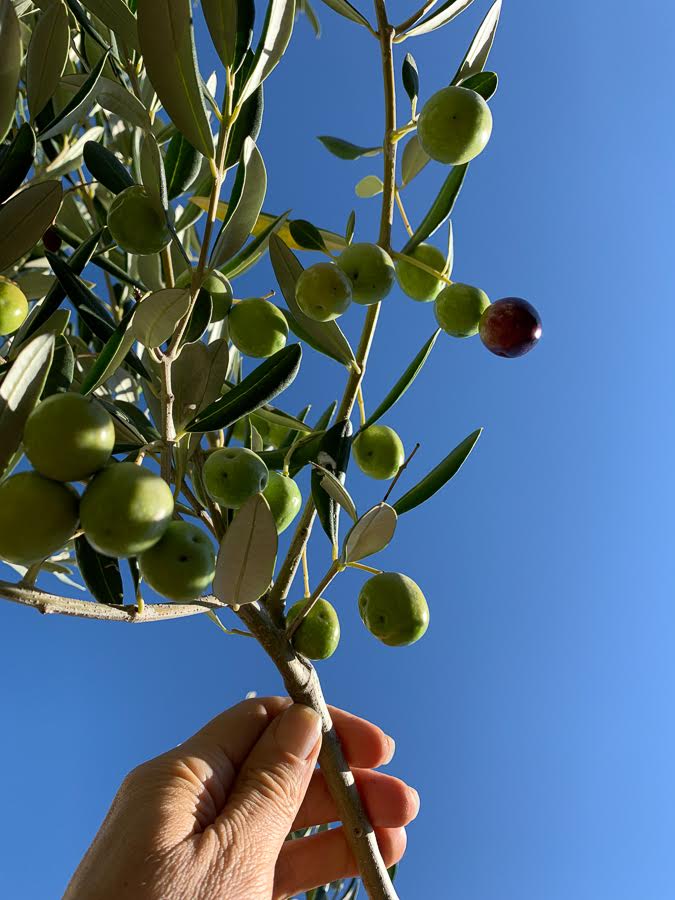
(Olive oil’s flavor depends on the color and ripeness of the olives when picked.)
Fond memories
Some of my fondest childhood memories involve picking fruit in the field with my family. My grandfather loved strawberries and come June we’d drive to the local pick-your-own farm. There’s nothing quite like getting your hands dirty in the strawberry patch on a sunny day and sneaking samples, one after another. Who could resist those juicy ripe jewels? Those were special times—talking, laughing, and gathering food we’d eat together. As soon as we got back home my mother pulled out her strawberry shortcake recipe and got to work. With the smell of shortcake baking in the oven, she’d gently mash the berries. When it was finally assembled, we all sat at the kitchen table and enjoyed a special homemade treat. Warm cake, like a sweet biscuit, layered and topped with a juicy berry mash was spectacular. Our vine-to-table experience lasted only a few hours, but it was some of the best bonding time a kid could wish for.
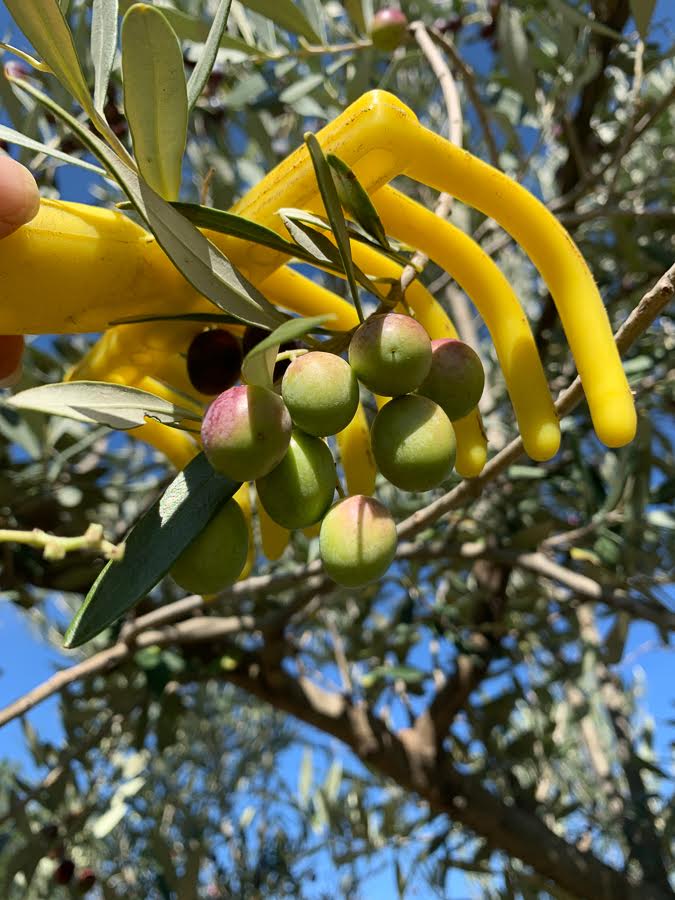
(A small hand rake is the only tool used on this family farm.)
Croatian harvest
A Croatian friend mentioned picking olives at her family grove and I jumped at the chance to help. Spending time with her and the family and enjoying a fun day outside had my name written all over it. I was also keen to experience this harvest tradition and learn more about Croatia’s olive oil—the liquid gold that’s key to Mediterranean cuisine.
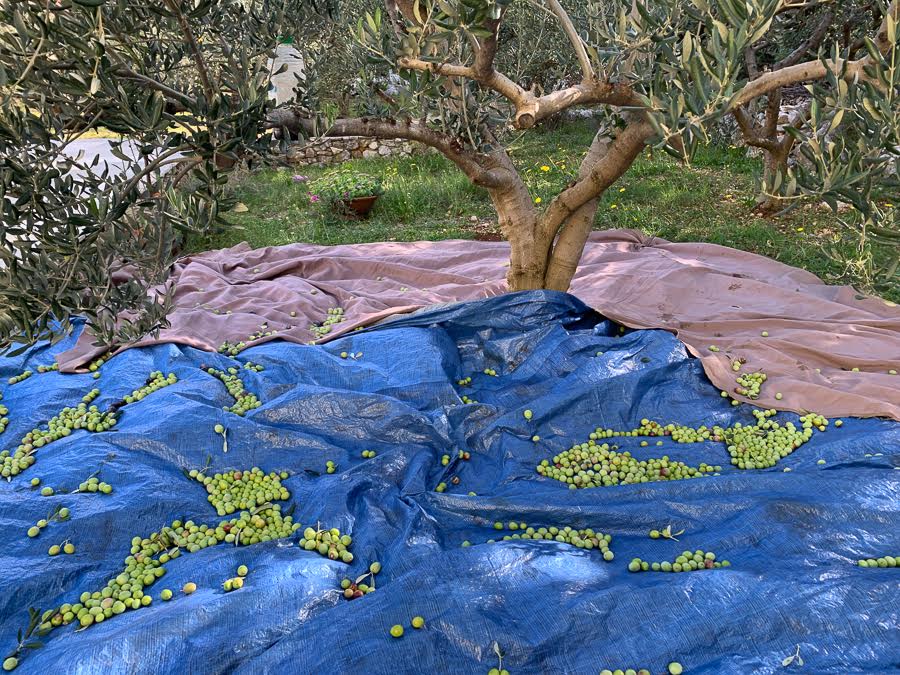
(Placing tarps and gathering up the olives are other jobs on picking day.)
They picked me up in the morning and we drove to the family house in Trogir. Dad laid tarps around the base of the trees, like bibs, while Mom warned me about the sharp leaves. We started in the front yard and picked for several hours until lunch time. It was all done by hand, except for a small hand rake I used to reach the olives in the higher branches. Occasionally one of us would climb a tree and extend our bodies to the point of teetering just to get that patch of olives way up there. We shared stories and laughed.
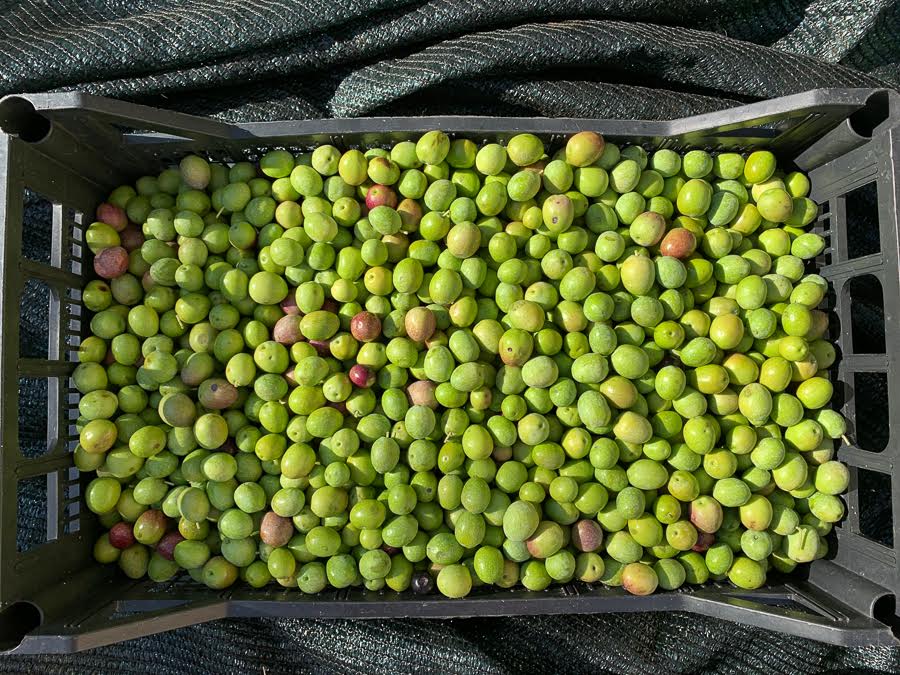
(A fresh picked basket of olives, cleaned from stems and leaves, is ready to rest in a saltwater bath before going to the mill.)
In the background, slabs of beef were being grilled and green beans, potatoes, and other food was being prepared. By the time we sat down to eat, including plenty of local wine, we had conquered the front yard. Conversation around the table was filled with warmth and happiness.
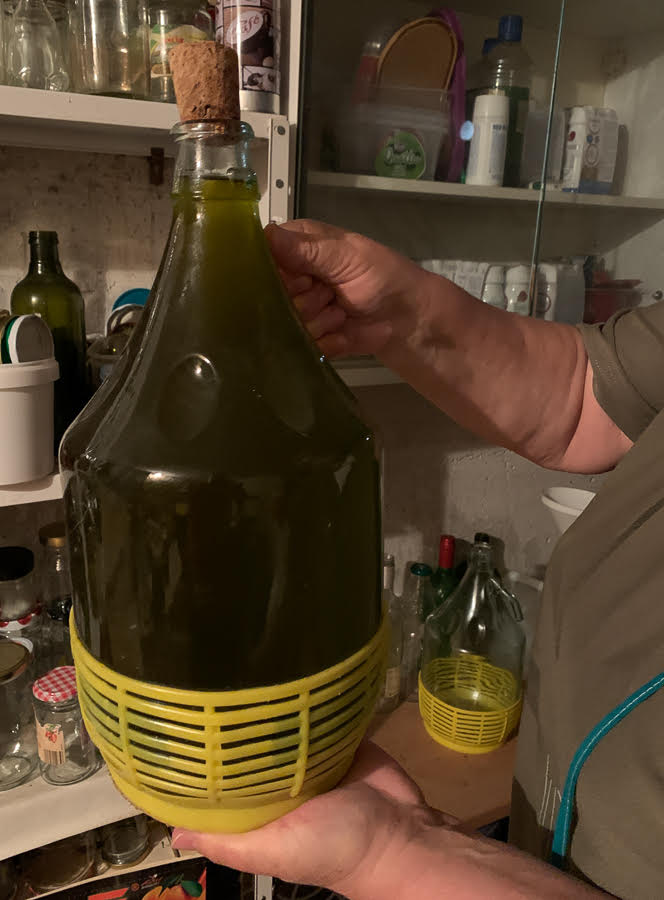
(Hand-crafted olive oil is typically stored in large bottles and kept in dark, dry places to retain freshness.)
With full bellies we went back to the field. I was eager to keep going and my goal was to finish as many trees as possible so the family would be ready for their appointment at the mill. Once you start harvesting the clock is ticking. You have to utilize the olives within three days of picking; if they sit any longer, they’ll oxidize and “sour.” We called it a day at 5pm, only because the sun was setting. We’d gotten through nearly half of the grove and glasses were raised to toast our strong effort.
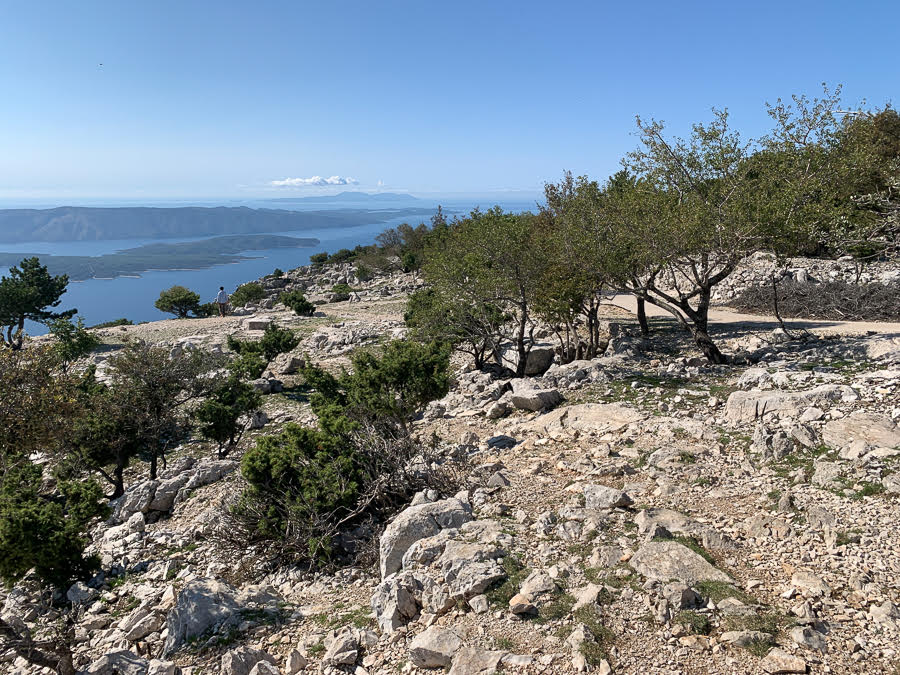
(The olive tree is one of the heartiest trees on earth. It’s resistant to Croatia’s strong Bura and Jugo winds and temperature differences and it thrives in rocky terrain and salty atmosphere. An olive tree can live over one thousand years and occasionally bear fruit for centuries.)
Picking olive trees
Harvesting runs from August through November depending on the region, variety, and desired ripeness. All olives start out green and then gradually become rosy and finally black. Depending on the type of oil you’re making, a combination of all three may be used for pressing.
First, determine the flavor you desire. The earlier you harvest, the more bitter the taste. As olives mature, their flavor mellows. Larger olives have more oil but the content drops as the olives ripen. Green olives have a longer shelf life but tend to be bitter and take several months to mellow. If picking olives for oil, pick those with a light, yellow color. If picking olives to eat, pick green olives when they are mature but before they change color.
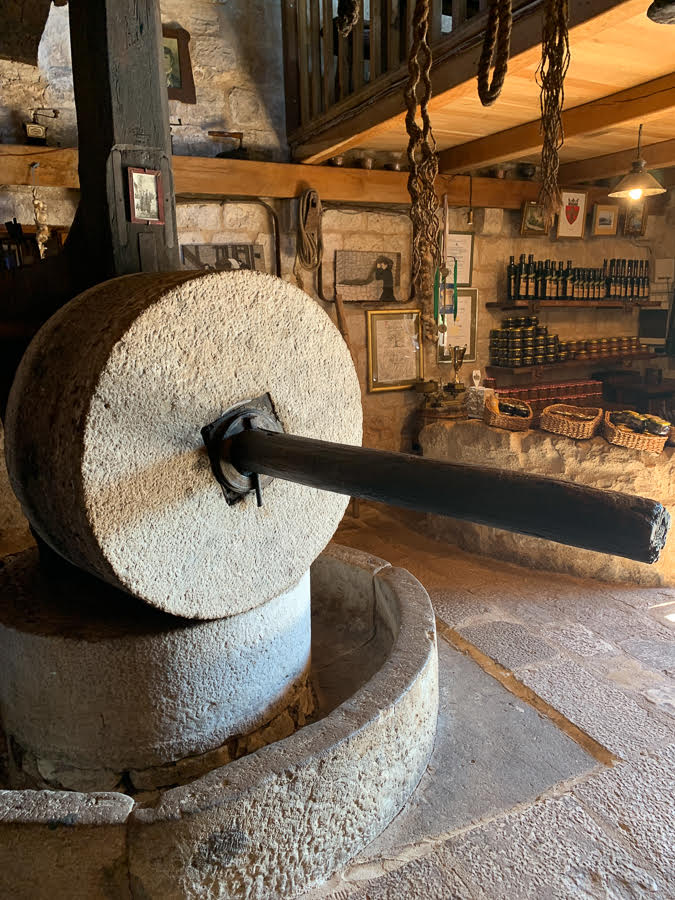
(An old stone mill at the Olive Oil Museum on Brač is a reminder of the hard, manual labor once used in production.)
The Olive Oil Museum
Earlier in the summer I learned about the history of olive oil production on the island of Brač at the Olive Oil Museum. Located in Škrip, the oldest village on Brač, this “oilery” was founded in 1864 and it processed olive oil for 100 years. In 1963 the mill closed shop when new technologies were introduced, namely the hydraulic press. It simply couldn’t keep up with modernization—the yields or the cost of new machinery.
The museum features the original old stone mill, a wooden spindle for pressing, and plenty of traditional tools decorating every inch of the walls and the ceiling, including funny looking goat skin bags that were historically used to transport the oil. Donkeys were strategic partners throughout the fully manual process and it’s an understatement to call olive oil production labor-intensive. To underscore the point, consider that you need 18 pounds of olives to yield one pound of oil.
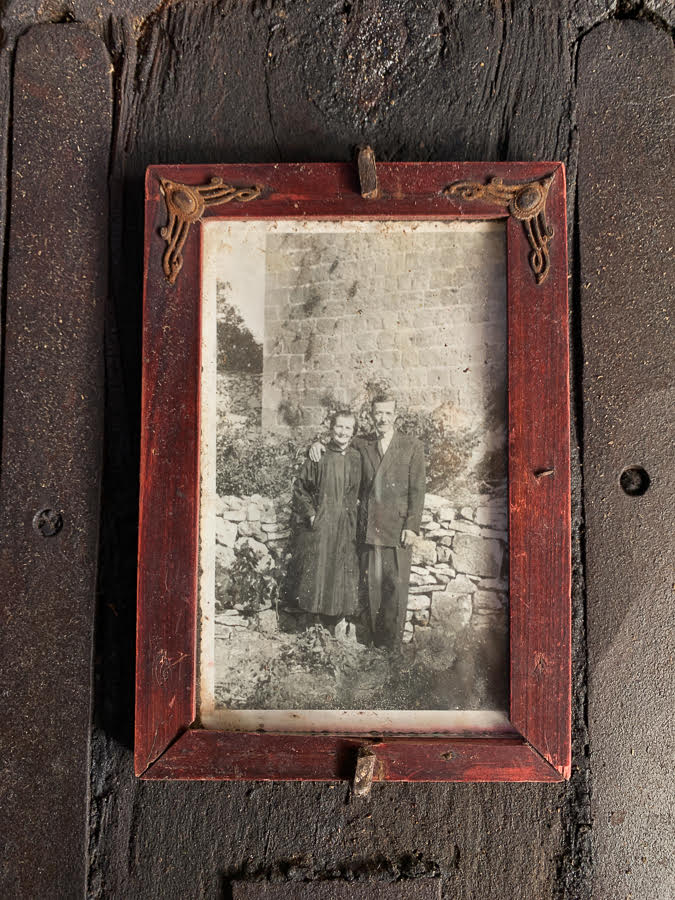
(A family photo from the early 19th century is affixed to the old stone mill in homage to generations of the family business.)
A very brief history of olive oil
Greece is credited as the first place to produce olive oil, around 2500 BCE when it was used as lamp fuel and in religious ceremonies in the Mediterranean. The oil appeared in cooking sometime during the 4th century BCE and in the Middle Ages, olive oil became an ingredient in soap and beauty treatments in Spain and France.
After all those centuries, it wasn’t until the 1960s that flavor became important. The introduction of the refined press transformed olive oil’s commodity status from a frying and cooking product into a delicious kitchen staple. Today we know it as a higher-end oil and a specialty good revered for its health and nutrition benefits.
In the 1990s, the International Olive Oil Council promoted olive oil as a key ingredient in the Mediterranean diet. In 2013, the Mediterranean diet was selected for the UNESCO List of the Intangible Cultural Heritage of Humanity. Interestingly, only seven countries endorsed the nomination and Croatia was one of them.
Taste
So how do you know what’s good? Place a taste of oil, not too much, under your tongue and inhale five or six times through your mouth. You should get a slight grassy taste and a pepperiness at the back of your mouth. Do you taste figs, lemons, or something fruity? If so, it’s fresh. The way to judge olive oil is on smell and taste, not color.
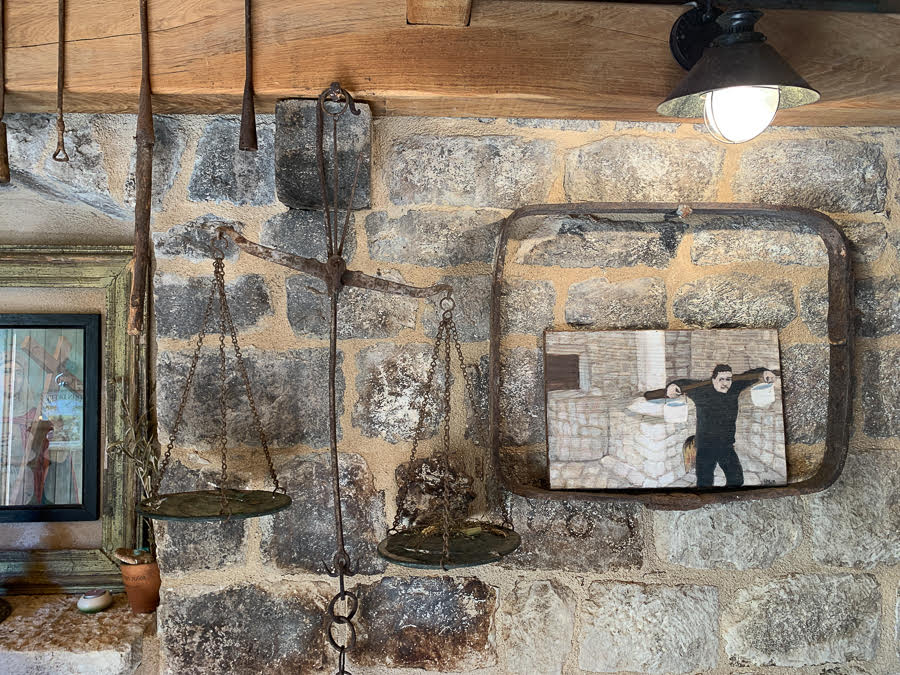
(The Olive Oil Museum displays paintings by academic painter Hana-Marta Jurčević Bulić that depict an earlier harvesting lifestyle.)
A superior product stays in Croatia
I’ve asked why, with so many trees and a superior quality product, Croatia doesn’t export its olive oil? One answer is that small batches are too much work and can’t bring a good enough return. The vast majority of Croatian producers are small farmers producing enough oil for their families and maybe some gifts. Another answer is probably closer to the truth—property here is chopped up so small that there’s no real opportunity for anyone to go big. I was told that in fact, Croatia imports olive oil to keep up with demand. That’s crazy.
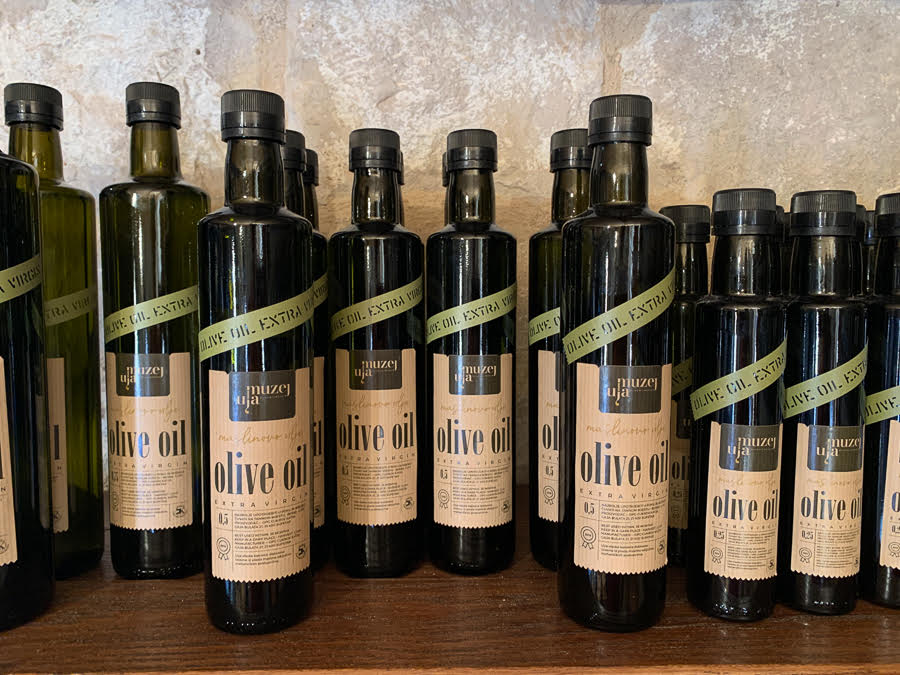
(Olive oil is a core component of the Mediterranean diet and it’s highly valued for its beneficial health qualities. The two most popular types are extra virgin olive oil (EVOO) and ordinary virgin olive oil.)
Nobody gets paid
There’s a lot to be said for Dalmatia’s cultural heritage and olive oil is a centuries-old foundation of life. The history of olive oil shows that people work hard to maintain their traditions as part of their ethnic identity and more recently to support their health and well-being.
Although modern machines and processes have galvanized the olive oil business at large, most Croatians are local farmers for whom the production of oil is a labor of love. It brings feelings of bonhomie and vitality. The reward is the joy of being in nature and a part of the magnificent countryside, having some fun, and sharing a lovely bonding experience with friends and family.
Learn more at TCN’s Digital Nomads channel.
Story and photographs ©2020, Cyndie Burkhardt. www.photo-diaries.com/
For more of Cyndie’s experiences, check out her Croatia Through the Eyes of a Digital Nomad column.

